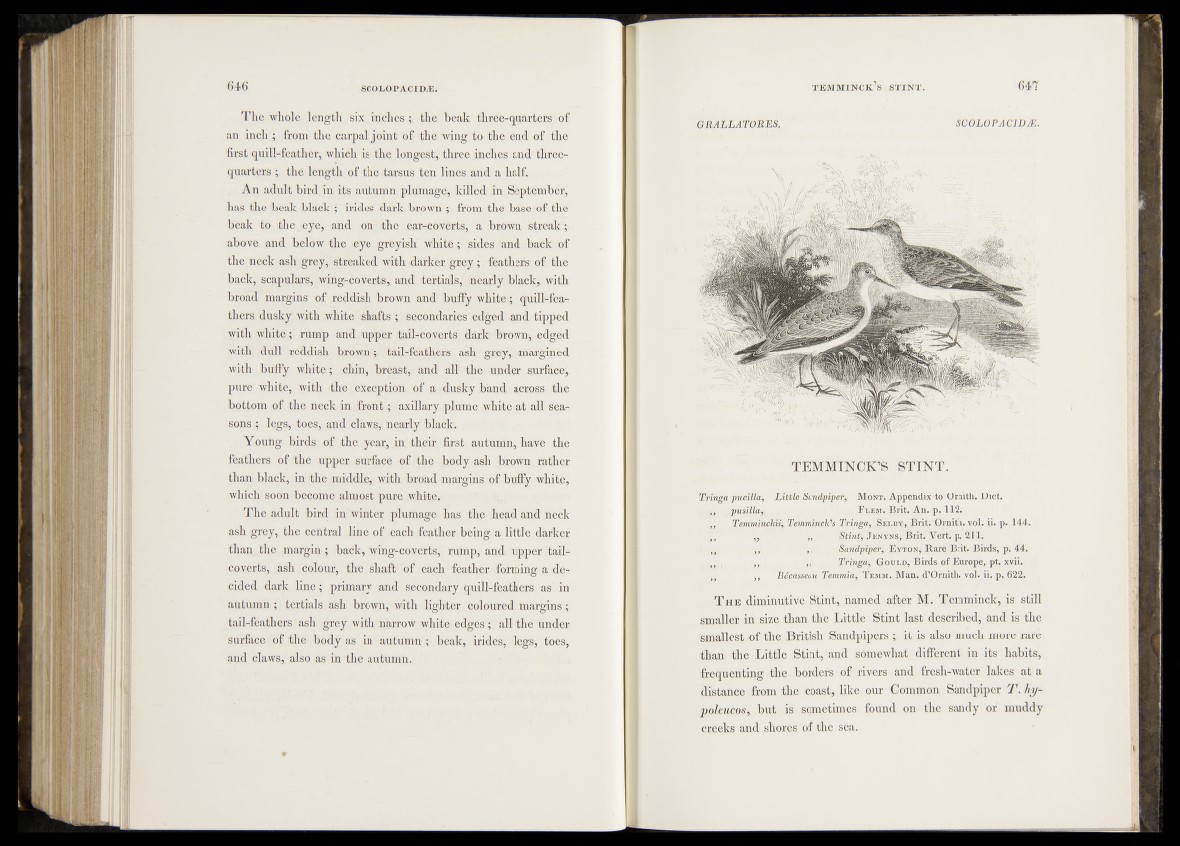
The whole length six inches; the beak three-quarters of
an inch ; from the carpal joint of the wing to the end of the
first quill-feather, which is the longest, three inches and three-
quarters ; the length of the tarsus ten lines and a, half.
An adult bird in its autumn plumage, killed in September,
has the beak black ; irides dark brown ; from the base of the
beak to the .eye, and on the ear-coverts, a brown streak ;
above and below the eye greyish white; sides and back of
the neck ash grey, streaked with darker grey ; feathers of the
back, scapulars, wing-coverts, and tertials, nearly black; with
broad margins of reddish brown and buffy white; quill-feathers
dusky with white shafts ; secondaries edged and tipped
with white; rump and upper tail-coverts dark brown, edged
with dull reddish brown; tail-feathers ash grey, margined
with buffy white; chin, breast, and all the under surface,
pure white, with the exception of a dusky band across the
bottom of the neck in front; axillary plume white at all seasons
; legs, toes, and claws, nearly black.
Young birds of the year, in their first, autumn, have the
feathers of the upper surface of the body ash brown rather
than black, in the middle, with broad margins of buffy white,
which soon become almost pure white.
The adult bird in winter plumage has the head and neck
ash grey, the central line of each feather being a little darker
than the margin; back, wing-coverts, rump, and upper tail-
coverts, ash Colour, the shaft o f. each feather forming a decided
dark line; primary and secondary quill-feathers as in
autumn; tertials ash brown, with lighter coloured margins;
tail-feathers ash grey with narrow white edges; all the under
Surface of the body as in autumn ; beak, irides, legs, toes,
and claws, also as in the autumn.
GRALLATORES. SCOLOPAC1DJE.
sXv.
TEMMINCK’S ST IN T .
Tringa pucilla, Little Sandpiper, Mont. Appendix to Ornith. Diet.
- „ pusilla, Flem. Brit. An. p. 11?.
■ Temminehii, Temminck's Tringa, Selby, Brit. Ornith. vol. ii. p. 144.
,, „ ,, Stint, J enyns, Brit. Vert. p. 211.
; )t ,, ,, Sandpiper, Eyton, Rare Brit. Birds, p. 44.
: ,, v „ ,, Tringa, Gould, Birds of Europe, pt. xvii.
)t ,, Bicasseau Temmia, Temm. Man. d’Ornith. vol. ii. p. 622. •_
T he diminutive Stint, named after M. Temminck, is still
smaller in size than the Little Stint last described, and is the
smallest of the British Sandpipers ; it is also much more rare
than the Little Stint, and somewhat different in its habits,
frequenting the borders of rivers and fresh-water lakes at a
distance from the coast, like our Common Sandpiper T. hy-
poleucos, but is sometimes found on the sandy or muddy
creeks and shores of the sea.